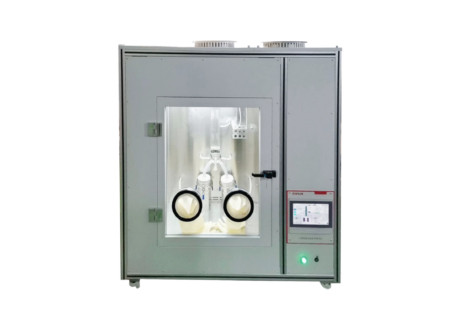
NewsInformation Center
What is the bacterial filtration efficiency test method?
2023/08/28
The bacterial filtration efficiency (BFE) test method is a standard used to measure the effectiveness of a material or product in filtering out bacteria. It is commonly employed in the evaluation of medical face masks and other personal protective equipment (PPE) to ensure their ability to reduce the transmission of bacterial particles.

The BFE test method measures the filtration efficiency by assessing the ability of the material to block the passage of aerosolized bacterial particles of a specified size. The test typically follows the guidelines specified in ASTM F2101 - Standard Test Method for Evaluating the Bacterial Filtration Efficiency (BFE) of Medical Face Mask Materials Using a Biological Aerosol of Staphylococcus aureus.
Here is a simplified overview of the BFE test method:
1. Test Setup: The test begins by preparing a bacterial challenge aerosol using Staphylococcus aureus or another appropriate bacterium. The aerosol is generated and diluted to a desired concentration.

2. Sample Preparation: The test material, generally a section of the face mask, is cut and mounted onto a test apparatus. Multiple samples may be tested simultaneously.
3. Testing Procedure: The aerosolized bacterial particles are drawn through the test material at a controlled flow rate. The flow rate ensures the representative challenge to the material. The downstream air is collected by a microbial sampler for subsequent analysis.
4. Microbial Analysis: The collected air samples from both upstream (pre-filtration) and downstream (post-filtration) are analyzed to determine the number of viable bacterial particles present. This analysis is usually performed by quantitative culturing or other appropriate methods.
5. Calculation of BFE: The BFE is calculated by comparing the number of bacterial particles detected downstream (post-filtration) with the number of particles detected upstream (pre-filtration). The percentage of bacterial filtration efficiency is then determined using the formula:
BFE (%) = (Number of particles filtered out / Number of particles upstream) x 100
The BFE test method allows for the evaluation of a material's ability to filter out bacteria with a specified particle size. It helps manufacturers and regulators ensure that medical face masks and other PPE meet the necessary standards for bacterial filtration efficiency, contributing to the overall safety and effectiveness of these products.
Previous: What's instrument for the automotive interior material abrasion resistance test
N e x t : What is the ASTM F2101 test method?



